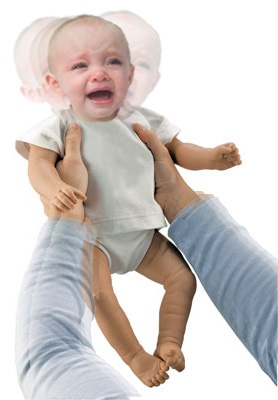Injuries are among the most unpredictable events in ophthalmology
Injuries are among the most unpredictable events in ophthalmology and general medicine.
Many seemingly innocent injuries turn out to have caused more serious damage than originally estimated, while images that look more dramatic, such as yposfagma (a local bleeding under the conjunctiva), can heal by themselves without leaving the slightest residue.
Particular attention is required for injuries involving other body parts as well. If the injury is, for example, the result of a traffic accident, first you need to exclude life-threatening situations and once the child is stabilized, conduct an ophthalmologic assessment.
The history of injury
Since even the most careful parents cannot constantly monitor their children, many injuries occur when children are unsupervised.
Children themselves probably cannot or do not want to say exactly what happened, especially if injured doing something that is forbidden. Also, external signs may not project the mechanism that caused the injury of the eye.
The ophthalmologist must know the mechanism to direct an examination properly and prescribe the appropriate treatment.
Shaken baby syndrome
Small babies and infants can be victims of a form of abuse where one of the parents or a relative lifts the baby with the hands and shakes violently, to stop him from crying. This shaking causes in the baby a characteristic triad of clinical signs including subdural hemorrhage (a form of cerebral hemorrhage), cerebral edema and hemorrhage to the retina.
This is an extremely serious condition and one in three children being abused in this way eventually die. Even those who survive most often end up having permanent, severe neurological disorders, cerebral palsy, and problems in learning and speech.
It's really incredible, but for at least half the cases of this syndrome the one responsible is a parent. 
Under no circumstances should we submit our child to such a trial with the expectation that this will calm the crying. Studies have shown that a violent jolt of just 5 seconds with the hands is enough to cause the syndrome.
Unlike this, gentle rocking, gentle movements and raising the child in the air with the hands does not have any harmful effects on health. Even if the child slips and bangs on a piece of furniture, or escapes from hands and falls on the ground, trauma may occur but not this serious syndrome.
Fracture wounds
Fractures are wounds where there has not been been a rupture or break in the part of the body injured. Eg. a tomato that was pressed and spoiled without tearing the skin.
They are usually caused by a punch or by the impact of objects which are relatively large and rather sharp such as a tennis ball or a toy. Pressure is transmitted across the eye but not accompanied by rupture.
Typically, the fracture wound on the eye appears yposfagma (blood concentration in the conjunctiva), which makes the "white" of the eye appear to "bleed". Although the image is impressive and frightening for the patient and his family, the mere yposfagma is practically harmless.
The hyphema is another common ocurrance in such injuries and consists of blood concentration in the anterior chamber, i.e. the space between the cornea and iris. As a result the child cannot see as the red, opaque blood prevents light from entering the eye. A small hyphema can "sit" at the bottom of the anterior chamber and permit vision again.
It's good idea to cover the eye (maybe both, even if the other was not injured), so as not to frighten the child while he cannot see although the eye is open, and to limit movements that may cause a recurrence of bleeding. Usually a hyphema is absorbed in a few days without any effect on vision.
Possible complications of a wound include glaucoma (patients with hyphema are as well to be checked annually as a preventive measure), dislocation of the lens, the appearance of cataract, and injury to the retina, which is caused by the transfer of the injury to the internal area of the eye via the uncompressed vitreous.
Puncture wounds
Puncture wounds can result from objects which are mostly sharp, such as glass or metal fragments, which move very quickly and enter the eyeball.
Such a fragment may be left in the eye or penetrate and be found behind it in the cavity.
These puncture wounds are typically more severe than is apparent at first glance. The emaninaton of the child is usually under general anesthesia and the practitioner tries to clean up the trauma, remove the foreign body and restore with stitches affected structures as close as possible to normal appearance.
Removal of a foreign body from the eye is not always easy. The method of removal depends on its properties. A metal fragment, for example, may be possible to remove using a special magnet.
A foreign body cannot remain in the eyefor long. In particular, metals may cause glaucoma, serious damage to the retina and acute inflammation.
Prognosis depends on the type and extent of injury. Some cases develop much better than expected and much of the vision is maintained. But other times it can even require the removal of the eyeball - a definitely very unpleasant situation that would seriously affect the rest of a child’s life. From an aesthetic point of view of at least, prosthetic eye technology has come very far and it is not easy to discern differences between a real and a prosthetic eye.
 German
German Ελληνικά
Ελληνικά